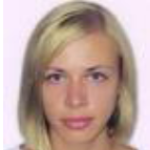International Journal of Modern Education and Computer Science (IJMECS)
IJMECS Vol. 16, No. 2, 8 Apr. 2024
Cover page and Table of Contents: PDF (size: 700KB)
Criterion for Ranking Interval Alternatives in a Decision-Making Task
PDF (700KB), PP.72-82
Views: 0 Downloads: 0
Author(s)
Index Terms
Decision-making, preference criterion, interval analysis, expert evaluation, confidence probability
Abstract
The study solves the problem of improving the methodological and algorithmic support of the decision-making process by developing a model of the preference criterion for interval evaluations of alternatives. The aim of the study is to improve the efficiency of decision-making based on interval expert data under conditions of uncertainty and risk by developing a criterion for the preferences of interval evaluations of overlapping alternatives. The object of the study is the decision-making process based on the classical efficiency matrix with interval elements, the subject is the model of decision maker's (DMP) preference criteria for interval evaluations of alternatives. The relevance of the task is stipulated by the urgency of the problem of adapting classical decision-making methods and models to practical problems of gray analysis, in particular, with interval uncertainty of primary expert data. A multifactorial model of the normalized preference criterion for interval evaluations of alternatives is proposed. Due to the additional consideration of the degree of preference of the DMP for the width of interval estimates, it allows ranking interval estimates of alternatives that overlap and are considered classically incomparable. A single analytical form of the normalized criterion model for ranking interval, weighted interval and point estimates makes it possible to increase the degree of automation of processing interval expert estimates in the decision-making process. Recommendations for the practical application of the proposed model are formulated. The developed model and corresponding algorithms can be used in automated expert decision support systems.
Cite This Paper
Yuri Romanenkov, Vadym Mukhin, Viktor Kosenko, Daniil Revenko, Olena Lobach, Natalia Kosenko, Alla Yakovleva, "Criterion for Ranking Interval Alternatives in a Decision-Making Task", International Journal of Modern Education and Computer Science(IJMECS), Vol.16, No.2, pp. 72-82, 2024. DOI:10.5815/ijmecs.2024.02.06
Reference
[1]Romanenkov, Yu. Tasks of structure of strategic business performance management in a company / Yu. А. Romanenkov, T. G. Zieiniiev // System research and information technologies. – 2015. – № 3. – P. 43–47.
[2]Romanenkov, Yu. Formation of prognostic software support strategic decision-making in an organization [Text] / Yu. Romanenkov, V. Vartanian // Eastern-European Journal of Enterprise Technologies. – 2016. – Vol. 2, No. 9 (80). – P. 25–34 (DOI: 10.15587/1729-4061.2016.66306).
[3]Shostak, I. Computer Support for Decision-Making on Defining the Strategy of Green IT Development at the State Level / I. Shostak, I. Matyushenko, Y. Romanenkov, M. Danova, Y. Kuznetsova. – In book: Green IT Engineering: Social, Business and Industrial Applications [Text] : monograph / edited by V. Kharchenko, Y. Kondratenko, J. Kacprzyk. – Springer, 2019. – P. 533–559.
[4]Romanenkov, Yu. Information and Technological Support for the Processes of Prognostic Modeling of Regional Labor Markets / Yu. Romanenkov, V. Pasichnyk, N. Veretennikova, M. Nazaruk, A. Leheza // Proceedings of the 8th International Conference on «Mathematics. Information Technologies. Education» (MoMLeT&DS-2019). Volume I: Main Conference. Shatsk, Ukraine, June 2–4, 2019. – Р. 24–34.
[5]Chan WK and Tong TKL, (2007), Multi-criteria material selections and end-of-life product strategy: Grey relational analysis approach, Materials & Design, Volume 28, Issue 5, Pages 1539-1546.
[6]Ashchepkov, L. T., Davydov, D. V. Reductions of interval noncooperative games. Comput. Math. and Math. Phys. 46,1910–1917 (2006).
[7]Levin, V.I. Antagonistic Games with Interval Parameters // Cybernetics and Systems Analysis. – 1999. – № 4. – P. 149–159.
[8]Sysoieva, I., Zagorodniy, A., Pylypenko, L., TomilinО., Balaziuk, O., & Pohrishchuk, O. (2021). Analysis of potential risks of audit of agricultural enterprises. Agricultural and Resource Economics: International Scientific E-Journal, 7(1), P. 164–191.
[9]Holodkova Viktorija Vladimirovna. // Modern Management Technology. ISSN 2226-9339. — #9 (57). Art. # 5708. Date issued: 08.09.2015. Available at: https://sovman.ru/en/article/5708/.
[10]Shved, A.V. Modeling and control of non-factors of different nature: Monograph. Mykolaiv: Ilion, 2019, 204 p.
[11]Malyeyeva, O., Lytvynenko, D., Kosenko, V., Artiukh, R. Models of harmonization of interests and conflict resolution of project stakeholders (2020) CEUR Workshop Proceedings, 2565, P. 24–35.
[12]Romanenkov, Yu. The Method for Ranking Quasi-Optimal Alternatives in Interval Game Models Against Nature / Yu. Romanenkov, V. Kosenko, O. Lobach, E. Grinchenko, M. Grinchenko // Proceedings of the 3rd International Conference on Computational Linguistics and Intelligent Systems (COLINS-2019). Volume I: Main Conference. Kharkiv, Ukraine, April 18-19, 2019. – Р. 334–343.
[13]H. Moulin. Axioms of Cooperative Decision Making / H. Moulin. – Cambridge University Press, 1991. – 332 р.
[14]Jing, D.; Imeni, M.; Edalatpanah, S.A.; Alburaikan, A.; Khalifa, H.A.E.-W. Optimal Selection of Stock Portfolios Using Multi-Criteria Decision-Making Methods. Mathematics 2023, 11, 415.
[15]Bugas, D. Modelling the expert’s preferences in decision-making under complete uncertainty / D. Bugas // Eastern-European Journal of Enterprise Technologies. – 2016. – № 5(4). – P. 12–17.
[16]Kovalenko I. I., Shved A. V. Development of a technology of structuring group expert judgments under various types of uncertainty. Eastern-European Journal of Enterprise Technologies. 2018. № 3/4 (93). P. 60–68, doi: 10.15587/1729-4061.2018.133299.
[17]Zhukovskaya O. A., Fainzilberg L. S. Bayesian Strategy for Group Decision Making and its Interval Generalization // Journal of Automation and Information Sciences. 2019. Vol. 51. Issue 1. P. 1–14.
[18]Dubnytskyi, V.Yu., Kobylin, A.M. and Kobylin, O.A. (2016), Calculation of elementary function values with interval stated argument determined in center-radius system, Information Processing Systems, Vol. 7(144), P. 107–112.
[19]Levin, V. 2018. Polyinterval mathematics and optimization in conditions of uncertainty. Radio Electronics, Computer Science, Control. 1 (May 2018), P. 58–64.
[20]Ruban, I. Models of adaptive Integration of weighted interval Data in Tasks of predictive expert Assessment / I. Ruban, H. Horenskyi, Yu. Romanenkov, D. Revenko // Eastern-European Journal of Enterprise Technologies. – 2022. – Vol. 5, No. 4 (119). – P. 6-15, (DOI: 10.15587/1729-4061.2022.265782).
[21]Liang, H. The fusion process of interval opinions based on the dynamic bounded confidence /H. Liang, C.C. Li, Y. Dong, Y. Jiang // Information Fusion. – 2016. – Vol. 29. – Iss. C. – P. 112–119.
[22]Zhu, Y. Optimal interval estimation fusion based on sensor interval estimates with confidence degrees / Y. Zhu, B. Li // Automatica (Journal of IFAC). – 2006. – Vol. 42. – Iss. 1. – P. 101–108.
[23]Zh. Hu, V. Mukhin, Ya. Kornaga, Ya. Lavrenko, O. Barabash, O. Herasymenko, "Analytical Assessment of Security Level of Distributed and Scalable Computer Systems", International Journal of Intelligent Systems and Applications (IJISA), Vol. 8, No.12, pp. 57–64, 2016.
[24]V. Tolubko, V. Vyshnivskyi, V. Mukhin, H. Haidur, N. Dovzhenko, O. Ilin, V. Vasylenko, "Method for Determination of Cyber Threats Based on Machine Learning for Real-Time Information System", International Journal of Intelligent Systems and Applications(IJISA), Vol.10, No.8, pp. 11–18, 2018.






